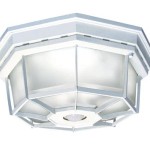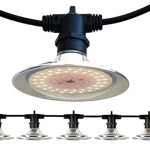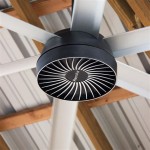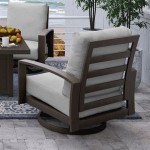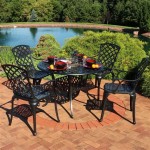How to Design an Outdoor Kitchen
Outdoor kitchens have become increasingly popular as homeowners seek to extend their living space and create a functional and entertaining area outdoors. A well-designed outdoor kitchen can transform your backyard into a culinary haven, providing a space for cooking, dining, and socializing under the open sky. This article will guide you through the process of designing your own outdoor kitchen.
Before embarking on your outdoor kitchen design journey, it is essential to consider the specific needs and preferences of your household. Factors such as the size of your outdoor space, the frequency of use, your cooking style, and your budget will all influence the final design. Understanding these aspects will help you make informed decisions regarding the layout, features, and materials of your outdoor kitchen.
1. Determine the Layout and Size
The layout and size of your outdoor kitchen are fundamental aspects to consider. First, assess the available space in your backyard and map out a potential location for your kitchen. Consider the proximity to your home, the existing landscaping, and any potential obstacles like trees or utility lines. Next, determine the size of your outdoor kitchen based on your intended use and the number of people you anticipate hosting. A small-scale kitchen with a grill and countertop might suffice for smaller gatherings, while a larger kitchen with multiple appliances and seating areas can accommodate larger groups.
Once you have a general idea of the size and location, create a rough sketch or use a digital design tool to visualize the layout. Consider the flow of traffic and the placement of key features, such as the grill, sink, refrigerator, and counter space. Ensure that there is adequate space for movement and that appliances and furniture are positioned ergonomically for ease of use.
2. Select Appliances and Features
The next step is to choose the appliances and features that will be included in your outdoor kitchen. This will heavily depend on your culinary preferences and budget. A standard outdoor kitchen will typically include a grill, a refrigerator, a sink, and storage space. However, you can add other appliances like a pizza oven, countertop burners, an ice maker, or a wine cooler to enhance your cooking experience.
When choosing a grill, consider gas or charcoal options, the size of the cooking area, and any additional features, such as side burners or rotisseries. Opt for a refrigerator specifically designed for outdoor use, as it will need to withstand varying temperatures and conditions. Select sink materials that are durable and weather-resistant, such as stainless steel or composite. For countertop space, consider materials like granite, concrete, or tile, which are both functional and aesthetically pleasing.
3. Choose Construction Materials
The materials used in your outdoor kitchen will influence both its durability and aesthetic appeal. Durable and weather-resistant materials are crucial for outdoor kitchens, as they will be exposed to the elements. The most common construction materials include:
- Stone: Provides a natural and elegant look. Common stone options include granite, limestone, and slate.
- Brick: Offers a classic and timeless aesthetic. Brick is durable and can withstand extreme temperatures.
- Wood: Adds warmth and character to your outdoor kitchen. Choose weather-resistant woods like teak, cedar, or redwood.
- Metal: Provides a modern and sleek appearance. Stainless steel, aluminum, and copper are common metal choices for outdoor kitchens.
- Concrete: Offers a durable and versatile option. Concrete can be poured into various shapes and sizes.
Each material has its own advantages and disadvantages, so selecting the right one depends on your personal preferences and the overall design of your outdoor kitchen. Consider the maintenance requirements, cost, and aesthetics when making your decision.
4. Plan for Lighting and Ventilation
Adequate lighting and ventilation are essential for creating a functional and enjoyable outdoor kitchen space. Consider installing ambient lighting for evening use. These can be string lights, pendant lights, or recessed lighting, depending on your desired aesthetic. You might also include task lighting over specific areas, such as the grill or prep space, to provide focused illumination.
Ensure proper ventilation to prevent smoke buildup and ensure air quality. A range hood or an exhaust fan is vital, especially if using a gas grill. Consider using a roof overhang or pergola to shield the kitchen from rain and direct sunlight.
5. Add Finishing Touches
With the primary design elements in place, it’s time to add finishing touches that make your outdoor kitchen feel complete. Consider incorporating features like:
- Outdoor furniture: Choose comfortable and weather-resistant seating options, such as patio chairs, sofas, or bar stools, to accommodate guests.
- Plants and landscaping: Add greenery to your outdoor kitchen with potted plants, flowers, or a small herb garden.
- Fire pit or fireplace: Create a cozy and inviting atmosphere with a fire pit or fireplace, particularly for cooler evenings.
- Bar counter or seating area: Incorporate a bar counter or seating area for social gatherings and entertaining.
Remember to choose furniture and accessories that complement the overall design and style of your outdoor kitchen. Pay attention to the details and personalize your space to make it unique and inviting.

16 Outdoor Kitchen Design Ideas And Pictures Alfresco Styles

How To Design An Outdoor Kitchen The Ultimate Guide

Designing The Perfect Outdoor Kitchen Kga Studio Architects

Design Tips For The Perfect Outdoor Kitchen Front Door Blog By Hayden Homes

25 Best Outdoor Kitchen Ideas Designs

Backyard Kitchen Design

Creating A U Shaped Outdoor Kitchen

Outdoor Kitchen Design 9 Common Questions And Answers Outeriors

4 Outdoor Kitchen Design Ideas You Should Consider

Outdoor Kitchen Ideas Everything You Need To Know Goodhomes Magazine

